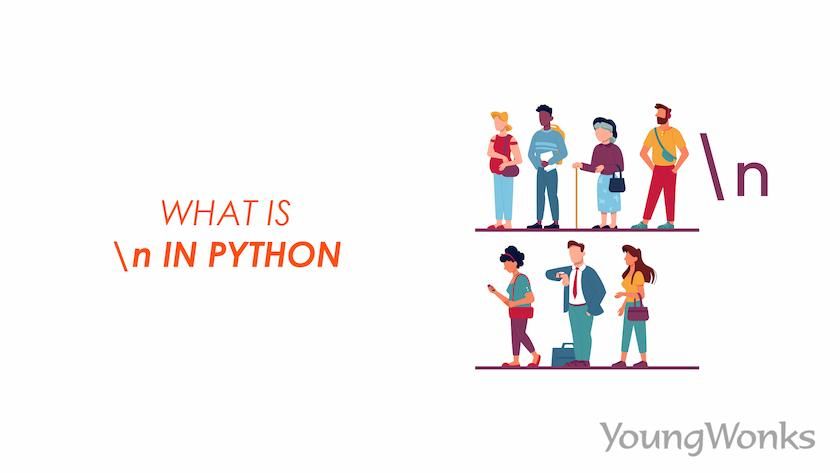Jun 09, 2024 By Team YoungWonks *
The Basics of Newline Characters
In the world of Python programming, the newline character ("\n") is fundamentally important. This multipurpose character functions as an escape sequence and is essential to denoting the end of a line of text. Beyond its practical use, "\n" turns into a crucial character for developers, adding a level of clarity to code formatting and improving user experience in general. It does this by coordinating line breaks in a way that improves code readability and makes user interfaces more consistent with Python's goal of making code as expressive and understandable as possible.
Escape Sequences and the Backslash
Understanding how the backslash ("\") works as an escape character is essential to discovering all of Python strings' details. This subtle but effective character acts as an entry point, allowing for the addition of numerous special characters, the most notable of which is "\n". A thorough grasp of escape sequences becomes fundamental to the complex world of Python programming, giving programmers the ability to efficiently navigate and work with strings.
Print Statement and the "\n" Syntax for Multi-Line Strings
In order to create a well-organized and aesthetically pleasing text display, the print statement in Python cleverly uses the newline character ("\n") to introduce line breaks. With the help of this feature, developers can present information in a well-organized manner and improve output readability.
The line print("Hello\nWorld") in Python uses the escape sequence "\n" within a string to create a newline character, resulting in the output being displayed on two lines. When executed, this code will print "Hello" on one line and "World" on the next, showcasing the use of "\n" to introduce a line break within the printed text. In contrast, if the line were print ("Hello World"), the output would be "Hello World" on a single line, without any line breaks.
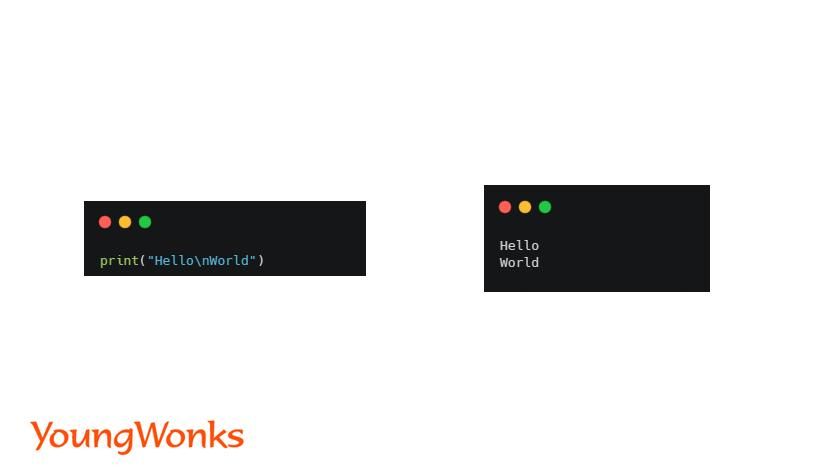
Escape Characters and Text Files
The "\n" character is used to create a new line in text files. It helps in reading data line by line and ensures proper formatting when writing to a file. By adding "\n" at the end of each line, developers can maintain a well-structured text file. In Python, the write() method includes "\n" to keep the text's format intact.
For example:
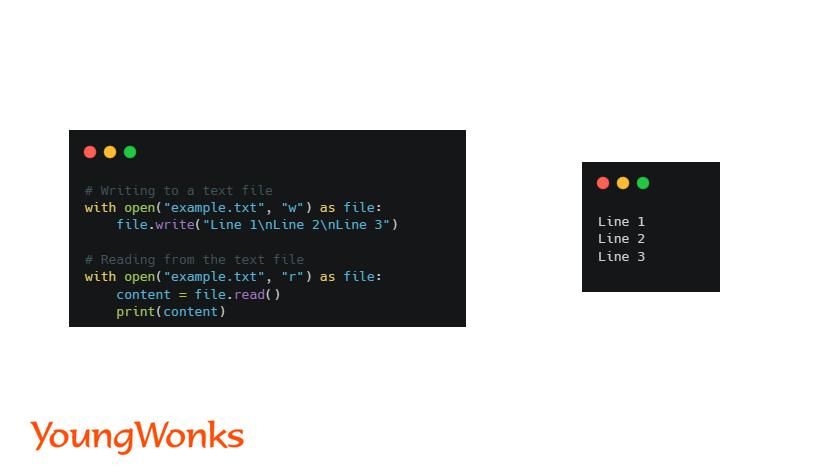
Python Functions and "\n"
The newline character "\n" is a useful tool within Python functions, helping to create dynamic output. By using "\n", developers can introduce line breaks, improving the readability and organization of messages. Here's an example of how "\n" can be used in the Python print function to format a message:
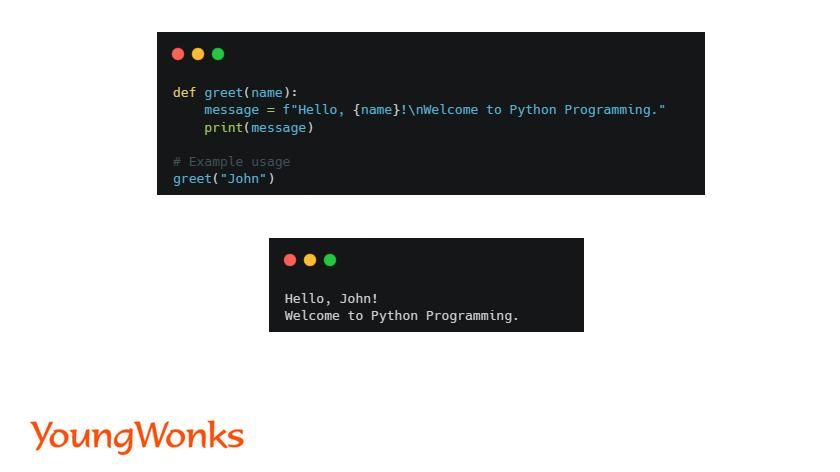
Iterators and Algorithms
The relationship between iterators and the newline character ("\n") is important for making code readable and clear. The newline character helps separate logical parts of the code into distinct lines, acting as visual markers. Using "\n" alongside iterators makes algorithms easier to read, especially when the logic is complex and requires careful arrangement. This combination introduces a visual rhythm, making the code more understandable and easier to follow. In short, the newline character helps organize the flow of code, and when used with iterators, it directs the reader's focus and aids in understanding complex algorithms.
For example:

Structuring Data with Dictionaries and Tuples
Using the newline character ("\n") can significantly improve the design and readability of complex data structures like dictionaries and tuples. For dictionaries, "\n" lets you separate key-value pairs onto different lines, making them easier to read and manage. For tuples, especially those with diverse elements, "\n" helps to break down the data into more readable lines, making it simpler for programmers to understand and work with specific parts. This is particularly useful for large datasets or collaborative projects, as it enhances code clarity and organization.
For example:
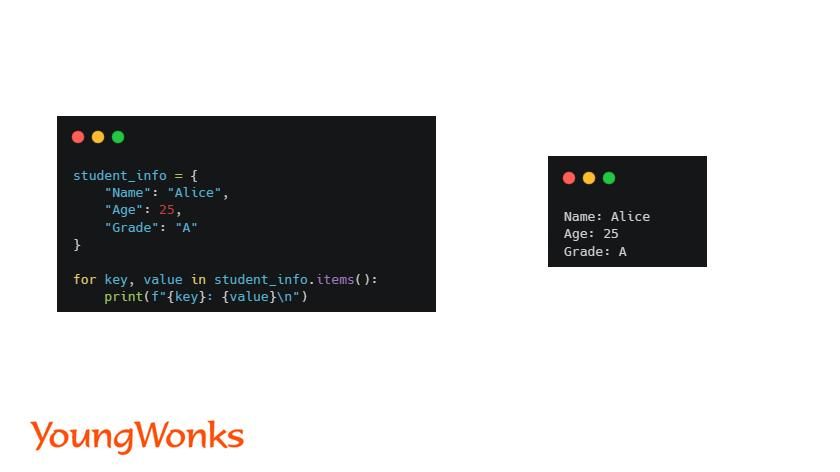
Windows vs Linux Line Endings
Python is highly versatile and handles different line ending conventions across operating systems with ease. It offers extensive support, including tools like the TextIOWrapper class in the io module, which manage text file encoding and decoding. This ensures a smooth experience for developers, promoting code portability and collaboration across different platforms. Python remains a reliable choice for those dealing with various line ending conventions.
Versatility Within Python Strings
Within Python strings, the newline character ("\n") serves multiple purposes beyond just creating line breaks. It can be used in concatenation to join strings together, making them more readable. Additionally, "\n" helps in creating substrings by allowing developers to isolate specific parts of a text. Moreover, it plays a crucial role in formatting, helping to structure and lay out text effectively. This versatile use of "\n" highlights Python's flexibility and efficiency in string manipulation.
For example:
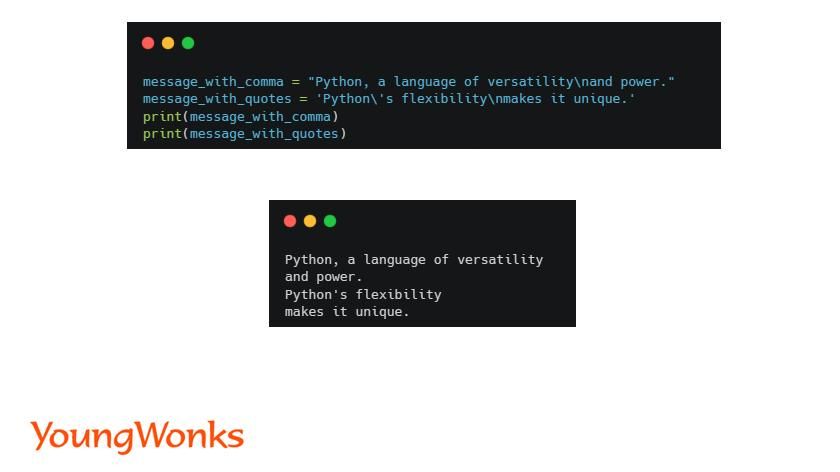
Whitespace, Indentation, and "\n"
Whitespace, indentation, and newline characters ("\n") are essential in Python programming for improving code readability. Good coding practices focus on using "\n" along with proper whitespace and indentation. Following these style guidelines helps create cleaner, more standardized code that is easier to understand and maintain. Line breaks help separate code blocks and improve the overall flow of the code. Paying attention to these formatting details not only makes code look better but also makes team collaboration smoother.
Cursors and "\n"
Navigating Python code requires understanding how the newline character ("\n") affects cursor placement. The "\n" character helps structure and organize code by influencing where the cursor moves. Proper use of line breaks and indentation helps make code more readable and easier to navigate. Efficient cursor movement around "\n" is crucial for developers to modify and understand their code efficiently.
Comparative Analysis Across Languages
In various programming languages, the newline character ("\n") is used uniquely to fit each language's specific requirements. Python uses "\n" to signify line breaks, focusing on readability and simplicity. Java also employs "\n" for line breaks but tends to be more verbose in its syntax. In contrast, HTML uses tags like <br> to create line breaks, which is a different approach from the character-based methods in Python and Java. Understanding these differences is vital for writing efficient and clear code, as each language handles line breaks in unique ways tailored to their paradigms.
Explore Learning Opportunities with YoungWonks
For young programmers looking to delve deeper into coding, YoungWonks offers an array of educational resources and courses designed to nurture their skills. Through Coding Classes for Kids, children can build a strong foundation in various programming languages. Specifically, our Python Coding Classes for Kids provide an in-depth understanding of Python, a versatile and widely-used language. In addition, YoungWonks features specialized courses like Raspberry Pi, Arduino and Game Development Coding Classes to further expand students' horizons in technology and innovation.
Conclusion
In Python programming, the newline character "\n" is significant for code formatting, data representation, and overall organization. It helps make the code more readable and aesthetically pleasing. Mastering the use of "\n" is important for developers to ensure their code is clean, simple, and well-formatted. This is essential regardless of one's experience level. Embracing the capabilities of this escape sequence enhances the elegance and readability of your code, making it efficient and easy to understand.
*Contributors: Written by Disha N; Edited by Rohit Budania; Lead image by Shivendra Singh
